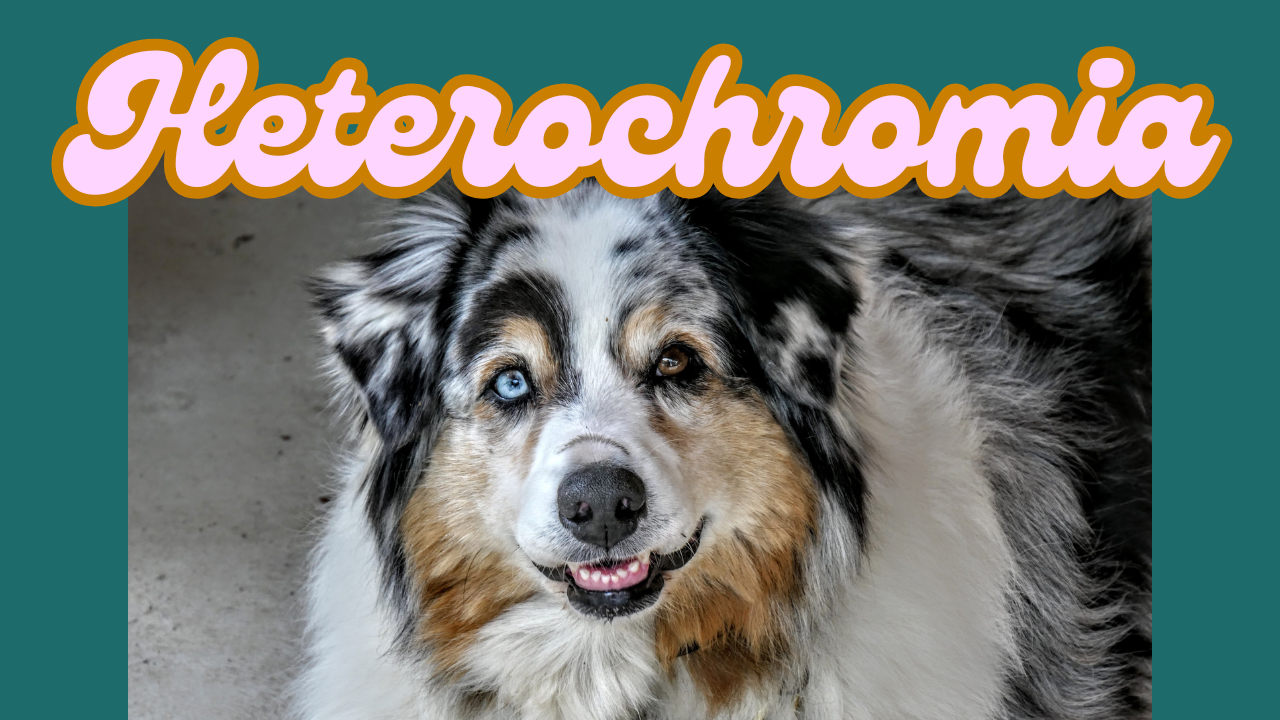Have you ever met a dog with two different coloured eyes and thought, “Wow, that’s stunning”? You’re not alone! Heterochromia, the condition where a dog has eyes of different colours, is a rare and captivating trait that turns heads and sparks curiosity. Let’s dive into what heterochromia really is, why it happens, and which dog breeds are most likely to sport this unique look! 🌟
What is Heterochromia? 🤔
Heterochromia is a term used to describe a condition where a dog has two eyes that are different colours. There are two types of heterochromia:
- Complete Heterochromia – where each eye is a completely different colour (e.g., one blue eye and one brown eye).
- Sectoral Heterochromia – where part of one eye is a different colour from the rest (such as a brown eye with a blue section).
Heterochromia can occur naturally due to genetics, but it can also be linked to certain health conditions or injuries. In most cases, it’s simply a beautiful, genetic quirk. 💫
Why Do Dogs Have Heterochromia? 🧬
The main cause of heterochromia in dogs is genetics. It occurs when there’s a difference in the amount of melanin, the pigment that determines eye colour, between the two eyes. The precise reason why some dogs inherit this trait while others don’t is still a bit of a mystery, but we do know that it’s more common in certain breeds.
Another reason for heterochromia can be medical, such as trauma to the eye or certain genetic disorders. However, in most cases, heterochromia is harmless and doesn’t affect the dog’s vision or health. 🎯
Breeds Most Likely to Have Heterochromia 🐕💖
Some dog breeds are more prone to heterochromia than others. Here’s a list of breeds where you’re most likely to spot those gorgeous mismatched eyes:
- Siberian Husky 🐺❄️: Perhaps the most iconic breed associated with heterochromia, Siberian Huskies are known for their striking blue eyes, and it’s not uncommon to see one with a brown eye alongside a blue one.
- Australian Shepherd 🐾: These energetic and intelligent dogs often sport heterochromia, especially in their beautiful blue eyes, which can sometimes be combined with brown or amber.
- Border Collie 🐶: Known for their agility and herding skills, Border Collies can also be born with two different-coloured eyes.
- Dalmatian 🐾: Dalmatians, famous for their white coat with black spots, are occasionally born with heterochromia, though it’s less common than in Huskies.
- Catahoula Leopard Dog 🐕: Known for their wild markings, the Catahoula Leopard Dog is another breed that may feature this stunning trait.
- Kooikerhondje 🦮: This Dutch breed may also have the eyes that make you stop in your tracks—each one a different colour!
Does Heterochromia Affect a Dog’s Health? 🩺
In most cases, heterochromia doesn’t affect a dog’s health or vision. However, in rare instances, it can be linked to conditions like deafness, especially in breeds like the Australian Shepherd and Dalmatian. If you ever notice that your dog has heterochromia and seems to be having trouble hearing or seeing, it’s always a good idea to check in with your vet.
But for the most part, heterochromia is purely aesthetic, and it makes your dog stand out as a one-of-a-kind beauty. 🌈
Is It Just a Pretty Face? 😍
While heterochromia is certainly a striking visual feature, it’s important to remember that a dog’s personality and health are the most important things to focus on. So, while your dog may have one blue eye and one brown, or even a two-toned eye, what truly matters is how happy, healthy, and loved they are. 🥰
Final Thoughts 💭
Heterochromia in dogs is a fascinating and beautiful trait that adds to the uniqueness of our furry companions. Whether it’s a Siberian Husky, an Australian Shepherd, or another breed, those mismatched eyes never fail to captivate and enchant. So, the next time you see a dog with heterochromia, take a moment to admire those beautiful eyes – they’re not just a rare genetic quirk, but a window into your dog’s one-of-a-kind charm! 🌟
If you’re lucky enough to have a dog with heterochromia, you’re in for a lifetime of “wow” moments and endless compliments. 🐾

